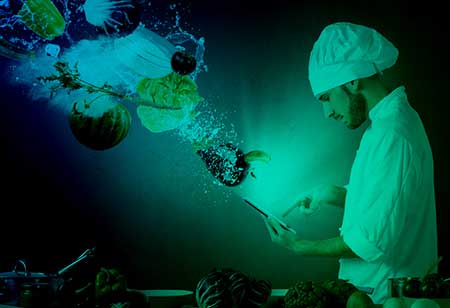Thank you for Subscribing to Food Business Review Weekly Brief
Gen Z to Direct the Future for Clean Packaging

By
Food Business Review | Monday, February 07, 2022
Stay ahead of the industry with exclusive feature stories on the top companies, expert insights and the latest news delivered straight to your inbox. Subscribe today.

For Gen Z, the origin of the product and how it's made is as significant as its price and quality. So naturally, this extends to the packaging of products, and clean packaging is the rage with this generation.
FREMONT, CA: 2020 has been allotted as the start of a new digital age. The working population demographics have also transformed significantly over the last decade. Millennials now rule the working population and will soon be replaced by Generation Z.
The prospective is in the hands of Gen Z (Generation Z), which have had internet connectivity in handy their whole lives, making them the first worldwide digitally native generation. This has had a deep impact on how they understand and see things. While this generation comes of age, we can anticipate significant business changes.
For example, the ideas from industrial revolutions to maximize products will become invalid, with the focus now on delivering personalized customer-centric products suited to each customer's taste.
The future generation will likely be more aware of their surroundings and access more information. As a result, they will be highly aware of many issues that may not even come across as an issue to the prior generations.
For Gen Z, where a product originates and how it is made is as significant as its price and quality. This widens the packaging of products, and clean packaging is the rage with this generation. To tap into this upcoming segment, brands must look into packaging options that reflect a brand's social and environmental consciousness.
Clean packaging is often misunderstood as a clean packaging design with minimal content. Alternately, it has more to do with what goes into the packaging than what appears on the outside. It is a challenge to what the packaging portrays in terms of transparency and authenticity.
Environmental awareness has been a rising concern for numerous years, and this is expected to gain maximum momentum in the future. Gen Z learns the need for a cleaner environment to ensure the species' survival. A clean label encourages a minimal number of ingredients, which lists these ingredients in a simple, transparent manner. It applies the neat label concept to product packaging. Unfortunately, many products on the market use packaging derived from unsustainable sources, damaging the environment.
Millennials and Gen Z are gradually dominating the aimed audience for each product. This leaves brands with no alternative but to adopt clean packaging methods. In general, natural and sustainably sourced packaging is almost often more pristine. Therefore, brands must replace plastic packaging with biodegradable plastics or paper packaging.






